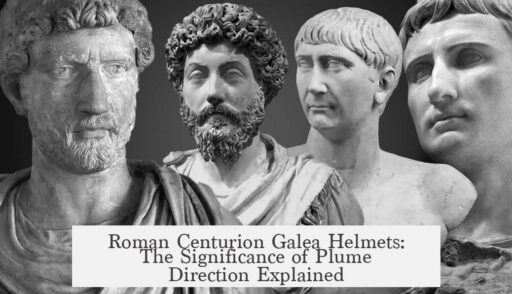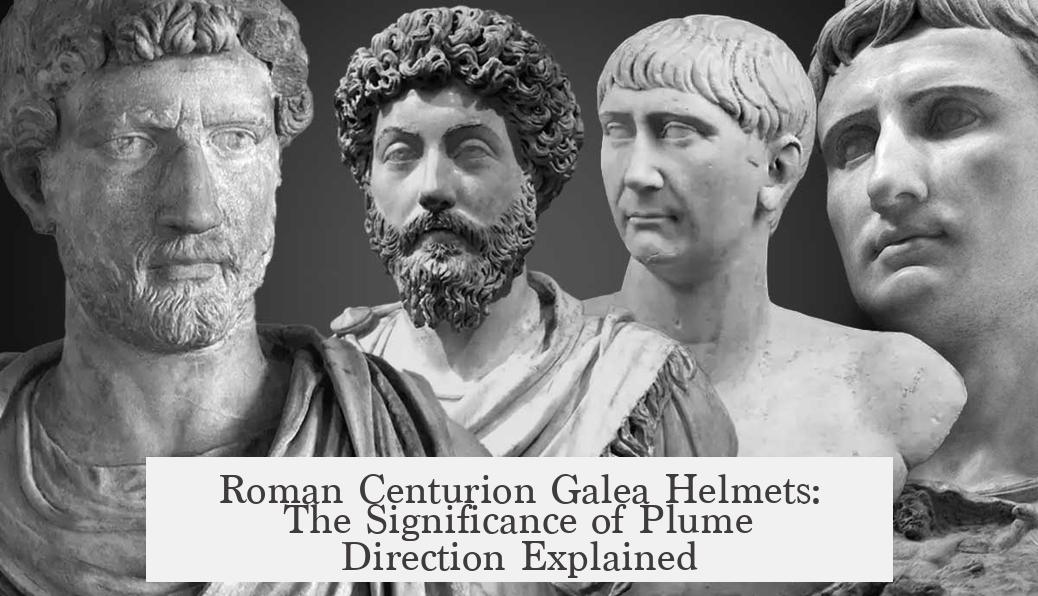The direction of the plume on Roman centurion galea helmets served as a distinctive visual marker, with centurions uniquely wearing transversal crests (plumes running side to side), while enlisted soldiers wore sagittal crests (front to back). This distinction helped identify centurions on the battlefield, although the exact reason for the directional difference remains debated.
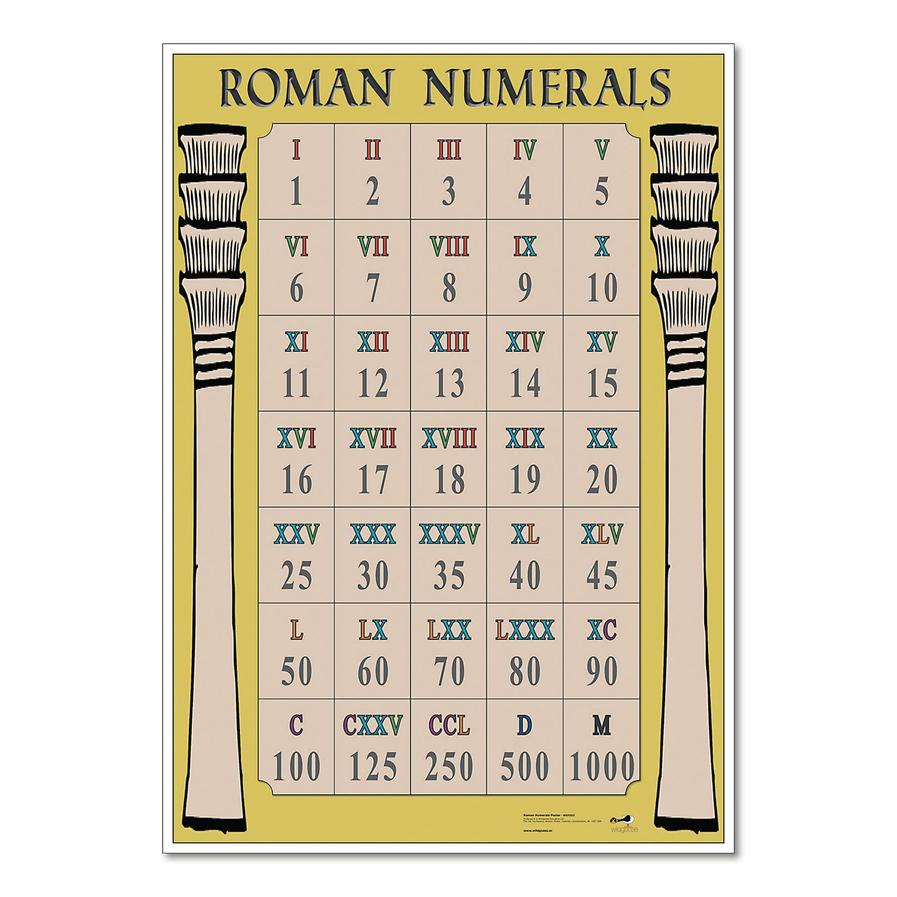
Roman centurions wore helmets featuring a transversal crest known as the crista transversa. This plume ran horizontally, from ear to ear across the helmet. It clearly set centurions apart from regular legionaries, who typically wore sagittal crests extending from front to back on their helmets. Some evidence suggests enlisted men might have only worn these sagittal crests during ceremonies, not in active combat.
The main practical reason for the transversal crest was to make centurions easier to spot during battle. Commanders needed to coordinate troops amid chaos, and a distinctive helmet plume facilitated this. The sideways plume provided a visible profile from multiple angles. However, scholars debate whether this explanation reflects original intent or if it is a later rationalization.
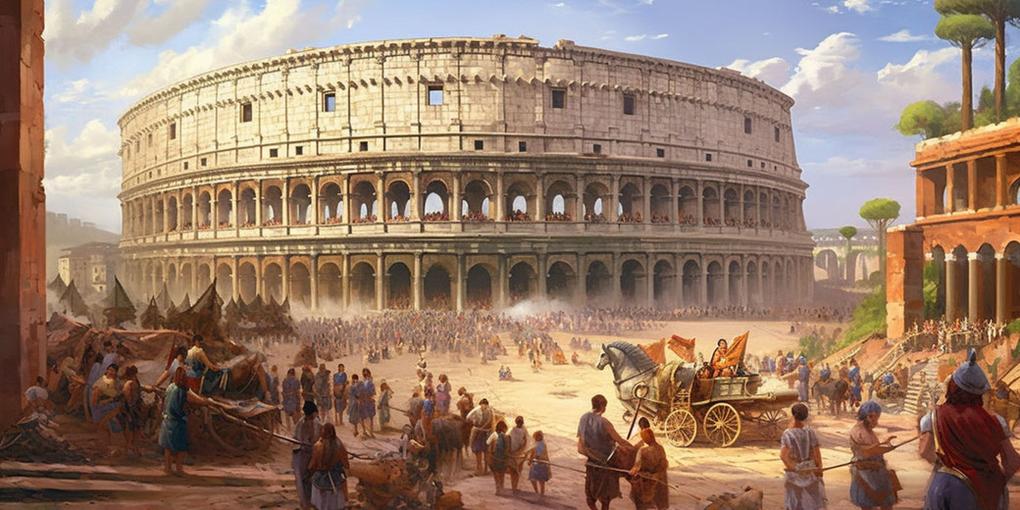
While the direction of the plume carried clear rank distinction, the meaning behind plume colors lacks definitive historical evidence. References to red, blue, yellow, or black plumes exist, but sources do not clarify if these colors signified rank, unit, or function. Similarly, there is no documented penalty or disciplinary action recorded for damage or dirtiness of the plume outside combat, which leaves aspects of the galea’s ceremonial respect unclear.
- Centurions exclusively wore transversal (side-to-side) plumes on their galea helmets.
- Enlisted soldiers had sagittal plumes running front to back.
- The transversal crest likely aided battlefield identification of officers.
- The significance of plume colors remains uncertain due to lack of evidence.
- No clear record of penalties for plume damage outside combat exists.
On Roman Centurion Galea Helmets: Does the Direction of the Plume Really Signify Anything?
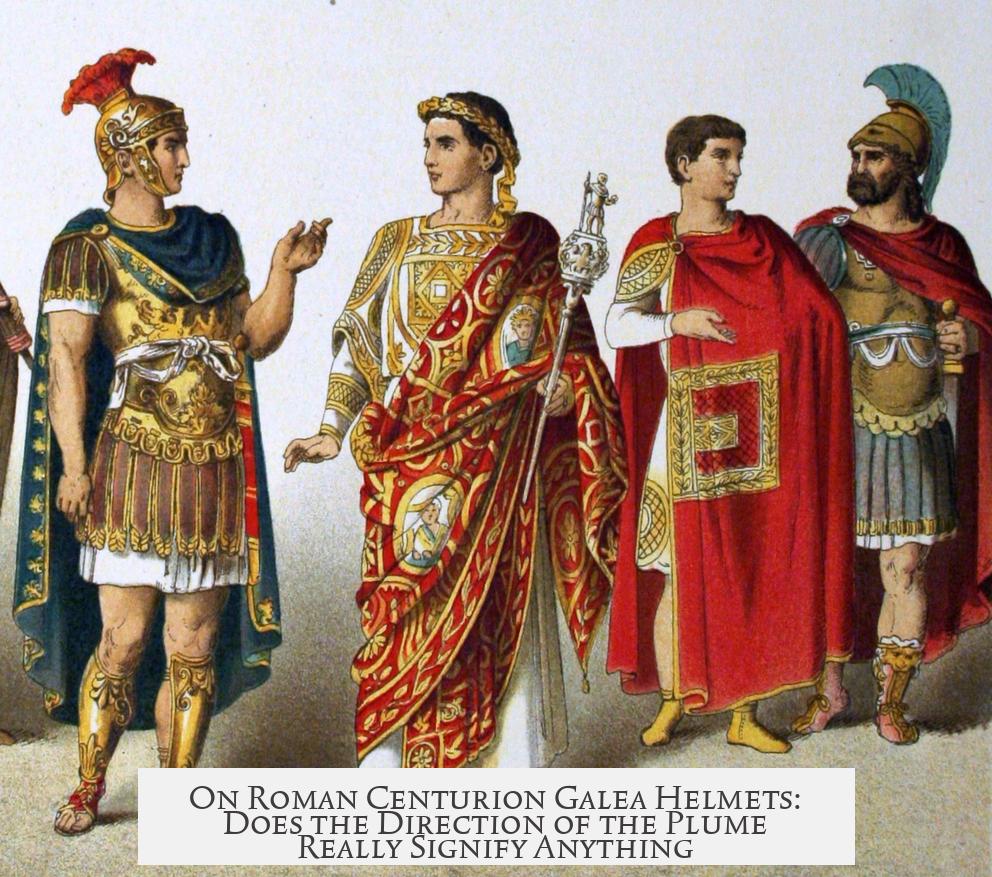
Yes, the direction of the plume on Roman centurion galea helmets did signify something important. Centurions uniquely wore a transversal plume—that’s a fancy term for a plume running sideways across the helmet. This was different from enlisted soldiers, who typically sported sagittal crests running front to back. But why? Well, the reasons might surprise you, and the story has a bit of mystery and debate surrounding it.
Let’s take a step back and unroll the Roman military drama from a soldier’s perspective.
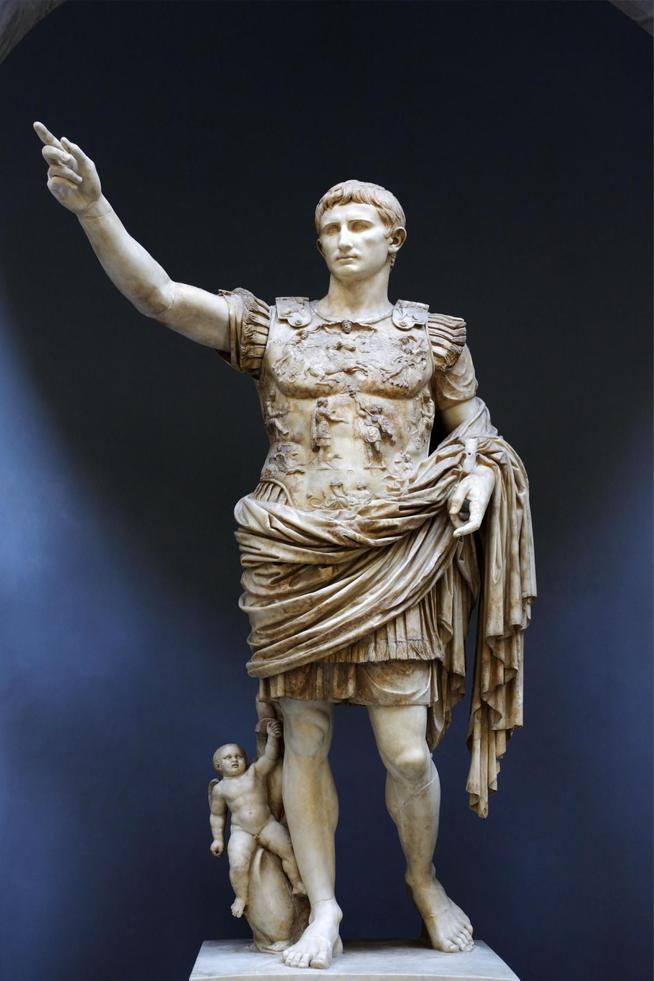
First Things First: What’s a Galea and Why a Plume?
The galea is the Roman helmet, a practical piece of gear that, believe it or not, could also play the part of an ancient billboard. But wait—a billboard isn’t usually the first thing you picture during battle, right? Yet, in the chaos of fighting, identifying leaders quickly was a lifesaver.

Transversal vs. Sagittal: The Tale of Two Plumes
Roman historian whispers reveal that only centurions—the backbone officers of the Roman legion—wore what’s called a “transversal crest” or crista transversa. This means their plume snaked sideways, like a banner waving across their helmet from ear to ear.
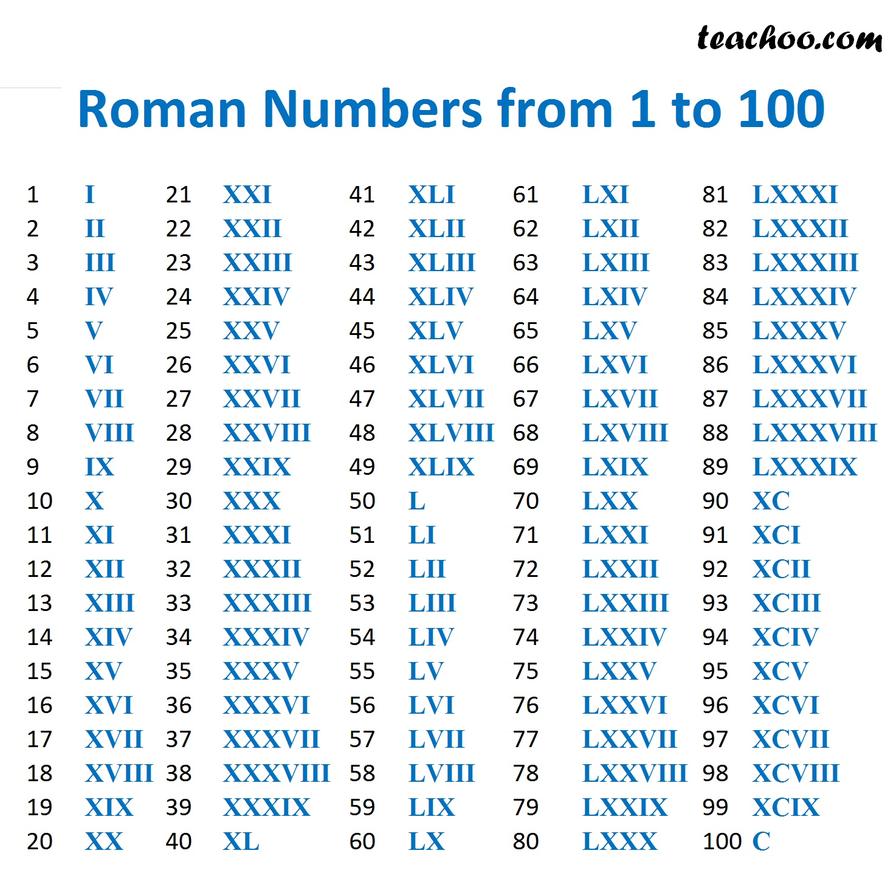
Meanwhile, ordinary soldiers usually donned sagittal crests. Picture a mohawk style plume running front to back on their helmets. But historical texts debate if those plumes were common in actual combat or just reserved for ceremonies and parades. Nothing like strutting a fancy ‘hawk for the Roman legion runway!
Why Sideways? Theories on Plume Direction

Here’s the classic theory: the transversal plume acted as a beacon during the fight. Battlefields were noisy, chaotic, and deadly confusing. A centurion needed to be spotted easily by his men to lead charges or give orders. The sideways plume made these officers stand out from a crowd of helmet-clad warriors.
“The transversal crest makes the officer easier to find on the battlefield”—an idea repeated but never confirmed as fact.
You could picture Roman soldiers squinting through dust clouds, shouting orders, eyes darting. Spotting their centurion by that distinct, lateral plume could mean the difference between holding formation or turning into a headless Roman chicken.
Yet, not all historians agree this was the original intent. Some argue it may be just an ex post rationalization—like explaining why socks mysteriously disappear in the laundry typed up as strategic reasoning centuries later.
Colors, Damages, and Untold Mysteries
Moving beyond plume direction, one burning question remains: did the COLOR of a plume mean anything? Red, blue, yellow, black—were these hues just fashion statements or secret codes in the Roman military playbook?
Sadly, the historical record keeps mum here. No clear evidence scratches the surface of plume color meaning. Maybe Romans just liked bright colors to jazz up their otherwise gritty gear. Or maybe, who knows, certain legions had pelican pink banners—just kidding, but imagine!
Another mystery remains: what happened if a plume got dirtied or damaged outside the heat of battle? Romans were famously strict, but the answer to penalties for a grubby helmet plume remains buried in the sands of time—or manuscripts lost on a scholar’s messy desk.
What Does This Mean for Us Today?
If you crane your neck visiting a Roman museum, those plumes are more than decorative fluff. The sideways plume is a badge of rank and leadership with a practical use in battle. Next time you see a sideways plume, you know it wasn’t a fashion statement—well, maybe a bit of that—but a signpost for Roman soldiers to find their leader.
Want to step into the centurion shoes? Here are three quick tips to dissect the Galea plume like a Roman history pro:
- Look for direction: Sideways means centurion; front to back could be a regular soldier’s ceremonial gear.
- Remember the debate: Not all historians agree on combat use for front-to-back plumes.
- Don’t expect color clues: These remain a mystery, so focus on shape and direction.
Final Thoughts: Helmets as Symbols and Tools
The Roman Galea was more than just armor. It was a communication tool. Like a captain’s armband or a coach’s whistle but on a much grander, featherier scale.
Whether the transversal plume was intentional battlefield brilliance or a stylish decision that just stuck, it set centurions apart. Every time a soldier spotted it, he saw his leader—a reassuring guide in the brutal ballet of war.
So next time you see an image of a Roman soldier, ask yourself—“Is that a centurion calling the shots?” The sideways plume might just be the silent clue hiding in plain sight.
And hey, if Roman legionaries ever had plume repair kits or helmet-polishing fines, that would be a story worth knowing. Until then, we salute the transversal plume for making Roman centurions unmistakable—and history fascinating.
